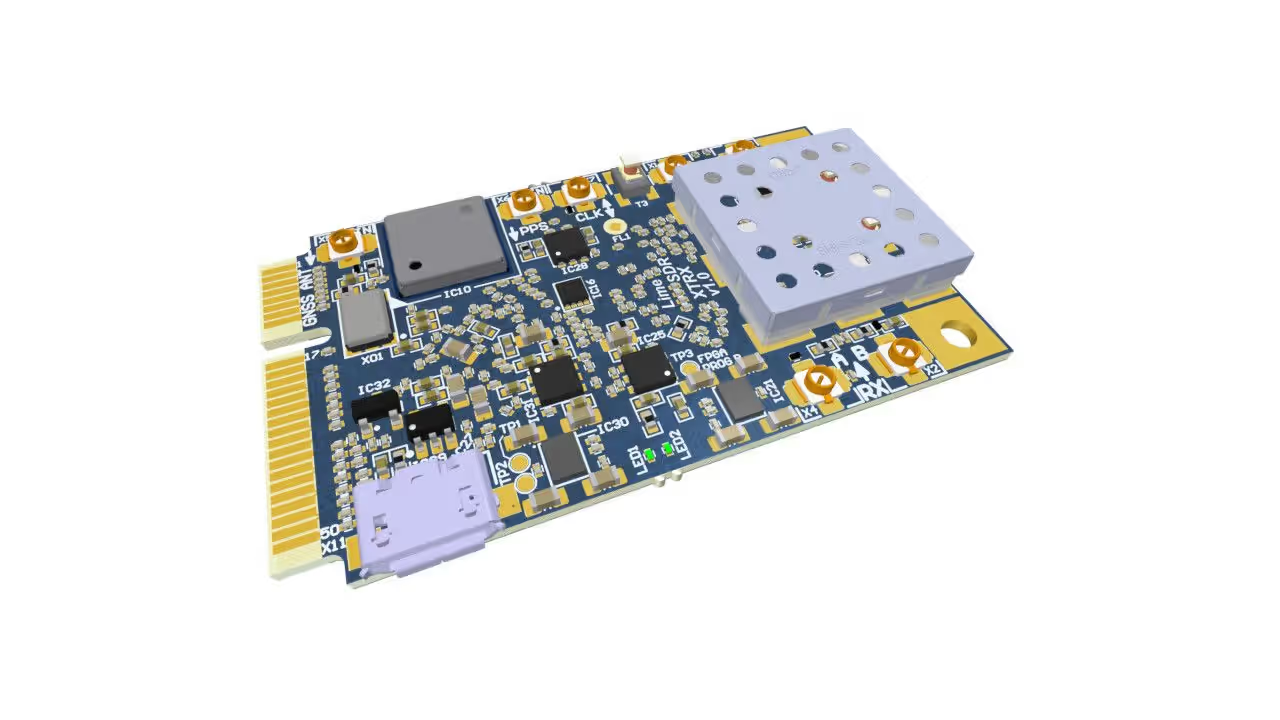
Lime Microsystems Prepares to Launch the Flexible New LimeSDR XTRX Software-Defined Radio Board
Lime Microsystems is proud to announce a new entry in the LimeSDR family of flexible software-defined radio (SDR) devices based around its field-programmable RF technology: the LimeSDR XTRX.
Featuring the same Lime Micro LMS7002M transceiver which powers the recently-launched LimeSDR Mini 2.0, the LimeSDR XTRX is designed as a core building block for advanced, scaleable software-defined radio projects — from logic-intensive edge networking systems, to massive MIMO platforms which integrate a number of synchronised LimeSDR XTRX modules.
Designed as a mini-PCI Express (mPCIe) card, the LimeSDR XTRX slots in to any one of a number of host systems, from low-power devices like the Raspberry Pi Compute Module 4 to high-performance servers, to provide highly-flexible software-defined radio capabilities. An example of the former being the Raspberry Pi 5G network recently announced by Vodafone and currently being demonstrated at Mobile World Congress.
Building on the Fairwaves XTRX Rev. 5 design, but boasting a number of enhancements, the open-source LimeSDR XTRX offers coverage of radio frequencies up to 3.8GHz with over 100MHz of bandwidth. An on-board AMD-Xilinx field-programmable gate array (FPGA) works with the LMS7002M to place key physical layer radio functionality, including filtering, decimation, and interpolation, directly on-device, while providing spare logic cells for custom functions to be implemented by the user according to individual requirements.
Key to the board’s success will be its status as a member of the popular LimeSDR family of software-defined radios. The LimeSDR XTRX will be fully supported by the Lime Suite software stack, making it easy for users of existing LimeSDR devices to migrate to the new board — while Lime Micro will continue to provide access to Fairwaves’ existing software stack, to assist its users with their own transition. The LimeSDR XTRX will also enjoy support and peer-to-peer discussion through the MyriadRF open-source SDR community.
The LMS7002M field-programmable radio-frequency chip which drives the LimeSDR XTRX offers two receive and two transmit channels with 30.72MHz of bandwidth each, covering a frequency range from 30MHz to 3.8GHz. It offers a maximum transmission power of 10dBm, frequency dependent, and 12-bit sampling at a rate of 30.72 million samples per second (MSPS), making it suitable for a range of tasks from satellite communication to cellular networking.
A crowdfunding campaign for the LimeSDR XTRX is due to launch on Crowd Supply in the near future, with interested parties invited to subscribe on the campaign page to be notified when the project goes live.